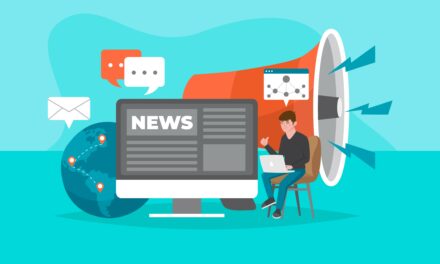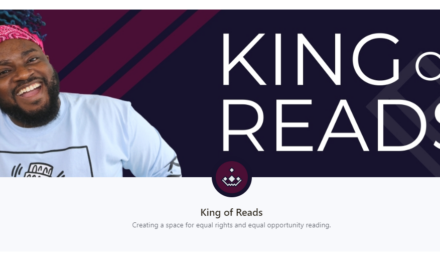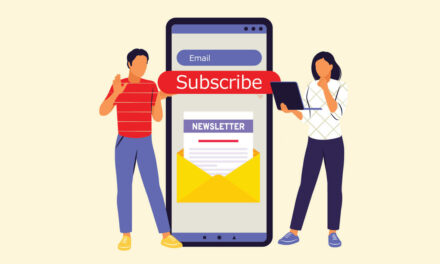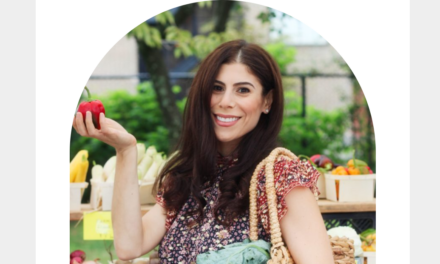
APRIL 4, 2025
Scroll down to see the newly released guide for the best times to post on social media in Things To Know.
full tilt
How to Craft a Title That Sells
Your book title is more than just a name — it’s readers’ first interaction with the work and possibly your content brand. And yes, people really do judge books by their covers.
A good title grabs attention, explains what your book is about, and convinces the reader to buy that book. The actual cover design plays a role, too, but that’s a topic for another day.
Easy, right?
Well, as a content entrepreneur, you know content is never easy.
Five tips to make it work: Creating the right title for your book (or any content product) is not simple. But you can follow these practices to make the process easier.
Remember, you can and should iterate on your title. For example, start with 20 ideas, then ask your email subscribers or social followers to vote on their top five. Now you’re creating engaging content for your audience and writing a book title – win-win!
Anyway, here are the five things to keep top of mind when drafting your title ideas:
- Keep It clear and simple: Prospective readers must instantly understand what they’ll get from your nonfiction book. Use simple language and avoid unnecessary jargon.
- Evoke curiosity and emotion: Prompting wonder or eliciting a feeling can be a terrific hook. Pose a question or promise a transformation using emotional language so long as it’s accurate to your content.
- Use power words: Speaking of powerful language, certain words evoke strong reactions. For example, action-oriented words like “win,” “achieve,” “transform,” and “master” convey accomplishment but are simple and direct, so your title isn’t too long.
- Balance your title and subtitle: For nonfiction books, subtitles play a crucial role. While the title captures attention, the subtitle provides context about the book’s focus or benefits.
- Match your brand tone: The tone should align with your brand and target audience. If your audience responds positively to bold, edgy language, lean into that style as Tilt Publishing author Louis Grenier did with Stand the F*ck Out. If your brand is more formal or aspirational, your title should reflect that, as Tilt Publishing author Brian Piper did with Epic Content Marketing for Higher Education.
Analysis of popular titles (and subtitles): Your book isn’t just a product — it’s a key component of your brand. A strong title positions you as a thought leader and can help build authority, attract clients, and generate speaking and coaching opportunities.
Let’s look at a few nonfiction books to break down why their titles (and subtitles) work so well.
*Atomic Habits by James Clear: This title is a masterclass in efficient, concise writing. Here’s the subtitle (which also does a LOT of work): Tiny Changes, Remarkable Results. I love this example because James clearly and directly outlines what his book is about using only six words.
On top of that, his title does everything a good title should. “Atomic” is a powerful word. It has loads of meaning and gravity behind it. Then, you pair it with “habits” – something prospective readers know is important but difficult. The combo indicates this book will be about powerful, important habit-building (and it is.)
The subtitle reinforces that by expanding on the transformative nature of the book. “Tiny changes” make the hard work of building better habits seem less daunting. And come on, we all want “remarkable results,” don’t we?
*How to Win Friends and Influence People by Dale Carnegie: A classic that most content creators, entrepreneurs, and marketers have probably read, the title is a perfect example of being direct. It says, “If you read this book, you will learn how to win friends and influence people.” You might not know why you want to win friends and influence people, but both are common goals in many people’s day-to-day lives.
The subtitle, The Only Book You Need to Lead You to Success, further explains that winning friends and influencing people is a pathway to success. The seminal work takes one key risk in the title and subtitle; it doesn’t define success. This can be seen as a mistake since you want to be clear about what the reader will get from the book. But leaving it open-ended also gives each reader the chance to fill in that blank for themselves.
*Stand The F*ck Out by Louis Grenier: If you want someone to notice your book, add profanity to the title. For better or worse, it’s attention-grabbing.
Louis’ mouthful of a subtitle, The No-Nonsense Guide to Positioning Your Business, Finding Your People, and Building a Durable Brand, does a lot of work to soften the impact of the title.
While I might have tightened the subtitle a little, the highly impactful title kind of makes it work. What I love about this combo is just how it pairs the in-your-face title with a detailed subtitle. Atomic Habits and How To Win Friends seek to balance concision and detail between the title and subtitle. But Louis goes in another direction, giving prospective readers a title that will make them stop and take notice, alongside a subtitle that gives them a wealth of information about the book’s contents.
Set your book up for success: I encourage you to think carefully about why someone should read your book, what they’ll get out of it, and what kinds of words might capture that ideal reader’s attention. Then, write a couple dozen versions, ask friends, followers, and peers for input, have an AI make more iterations, get more input, and hone in on the most effective title you can.
– Paul Hobday
tilt publishing book club
- No mo … The nonprofit NaNoWriMo (National Novel Writing Month) shuttered its virtual doors. [The Guardian]
- Author juggling … Andi Robinson shares how she wrote her business book and held down a full-time job. [The Tilt]
- Affair to remember … Sofía Aguilar explains why self-publishing will always be her first love. [The Slush Pile]
- No love lost … Amazon isn’t the only option for selling your books. [Lulu]
things to know
Money
-
Tune up: Patreon says podcasting is the single highest-earning category of creators on the platform. Last year, that meant over 6.7M paid memberships and $472M. [Tech Crunch]
Tilt Take: Monitor your go-to platform’s evolution and marketing to see if it’s still doing what you need it to do. -
Legal protection: Substack partnered with the nonprofit Foundation for Individual Rights and Expression to provide legal support to protect foreign writers residing lawfully in the United States who may be targeted for what they write. [The Verge]
Tilt Take: Substack will help both Substack and non-Substack writers. Disappointing that it’s needed, but glad to see companies standing up for those who may not be able to afford the help.
Audiences
-
Take a bite: New research identifies the top platforms producers say help listeners find, follow/subscribe, and listen to their podcasts: Apple Podcasts, Pocket Casts, Spotify, YouTube, and Podcast Addict. [Podnews]
Tilt Take: YouTube (not YouTube Music) is moving up the list because the video platform recognizes the value of podcasts.
Tech and Tools
-
Best times to post: Sprout Social analyzed over 30K customers’ data to identify the best times to post by platform and industry for its 2025 report. [Sprout Social]
Tilt Take: Always good to know the standards, but don’t forget to look at your own data reports. -
Green it: Reddit made importing ad campaigns from Meta to its ad manager program easier. A one-stop view of ad campaign builds has also been added. [Social Media Today]
Tilt Take: Take a look at Reddit to find your audience and see what they’re talking about. Then, add the ads to use the undervalued platform for audience growth.
And Finally
-
Farewell Johnny: “The next Johnny Carson may not need an NBC – or any other network – to get the job done.” That’s a takeaway from Taylor Tomlinson’s recent departure and earlier exits from broadcast late-night TV from Trevor Noah and Roy Wood Jr. They want to take more control over their work and businesses. [Variety]
Tilt Take: Sounds like they’re content entrepreneurs, too!
business of content
- How to Create SMART Goals (Content, Inc.)
- Joe and Robert Go Deep into the Dumbery (This Old Marketing)
- How to Copyright the Copy That You Wrote (Publish & Prosper)
- ICYMI: Improve Your Operations and Boost the Business
Get more of the Full Tilt stories on TheTilt.com.
Know a content creator who’s going full tilt? DM us or email [email protected].
Want to advertise on The Tilt? Go here.
Or email us at [email protected].
Was this email forwarded to you? Get your own sub here.
Copyright ©2025 Lulu Press, Inc. All rights reserved.
Update your preferences | Unsubscribe | PO Box 12018, Durham, NC 27709





